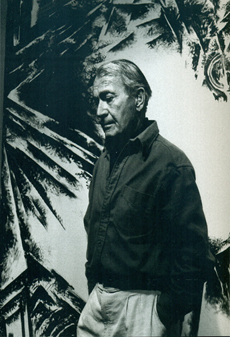The Woodstock Byrdcliffe Guild’s exhibition of William Pachner’s drawings runs from March 29 to May 5, 2013. Pachner has lived in Woodstock since 1945 and counts fellow artists Yasuo Kuniyoshi, Eugene Speicher, and Bud Plate as his artist-peers.
William Pachner was born in 1915 in Brtnice, Moravia, a province of the Austro-Hungarian Empire. In 1920 an accident left him blind in his left eye. Nonetheless, he studied design at the Kunstgewerbeschule in Vienna in the 1920s. By 1935 he was a staff artist at Ozvěny, an illustrated weekly based in Prague. At the start of World War II, he managed to obtain a visa to the United States. For a time, he worked as the art director at Esquire Magazine in Chicago. In 1945 he learned that all his family had perished at the hands of the Nazis. From this point on, he moved to Woodstock and began to dedicate his life to executing serious art. By 1948 he started to participate in large annual exhibitions, such as the Carnegie International and the Whitney Annual.
In 1981 after several operations to fix a detached retina, William Pachner lost sight in his “good” right eye. Up to this time, Pachner had worked primarily with color. After this devastating setback, he vowed to work with his “bad” left eye. From 1981 to 1999, he produced between 400 to 600 black-and-white drawings. The current show, curated by Nancy Azara, Byron Bell, Matt Leaycraft, and Ann Pachner, shows 41 of these works.
On Saturday, April 6, William Pachner appeared with the poet and personal friend, Michael Perkins, at the Byrdcliffe Kleinert/James Center for the Arts for a gallery talk. At one point, Michael turned to Pachner and suggested that some people who attend art colleges declare that they’re artists upon graduation. Mr. Pachner replied (and I am paraphrasing) that art is a lifelong struggle and requires one to dedicate oneself to trying many things. Hopefully, one is able to reach an inner truth through one’s works, and this, in turn, ignites recognition by one’s fellows. The rhythmic chiaroscuro of Pachner’s works in the show allows the observer to not only feel the pathos of his life but to experience the truth of his art.
~ Weston Blelock


0 Comments